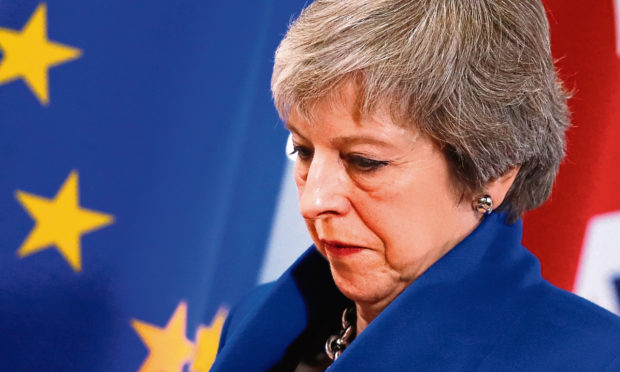Theresa May is in Scotland today, a whistlestop on her nationwide campaign to try to sell her Brexit deal directly to ordinary voters.
We can’t exactly call it a comeback tour as she hadn’t disappeared, remarkably. But it might be a valedictory tour, because if she fails to get her message across to the public, she is unlikely to win over politicians come the crunch vote in the Commons, due in December. And since she has refused to rule out resigning in the event of a humiliating defeat by MPs, this may well be her last visit, as prime minister, anyway.
How will Scotland welcome her? And what can she say to convince a nation that opted overwhelmingly to remain in the EU that her exit package is worth supporting?
It seems like an impossible challenge but, for several reasons, the PM may have an easier time engaging with Scots than with other Britons this time.
With only four months to go until Britain leaves Europe, May will tell the country that this deal, so painfully reached with her European counterparts, is the only deal. As European leaders warned in Brussels over the weekend, there is no Plan B.
“If there was anything better I can tell you Theresa May would have gotten that,” said the Dutch premier Mark Rutte. “She has fought very hard, she was very stubborn, and she always is, in a positive way, very tenacious.”
To reject the settlement now would mean opening the door to “more division and more uncertainty”, said May. The country could be left with no deal and no transition period, her position could become untenable and her government could collapse. All over the nation there will be people cheering such an outcome – bring on chaos, even bring on Jeremy Corbyn.
The London march supporting a People’s Vote showed an appetite for anarchy among the ultra-Remainers, while the hardline Brexiteers have long had suicidal tendencies. They would rather see their government fall than enable the current withdrawal agreement that May has negotiated.
But in Scotland, a greater sense of pragmatism may prevail. Here, we have witnessed the consequences of a country divided and have more to lose than the rest of the UK from continued feuding over the EU.
Anyone doubting this only had to observe our First Minister, Nicola Sturgeon, and her Brexit Secretary, Michael Russell, making their last-ditch attempt to wreck May’s plans. No surprises there, of course, since this has been the SNP strategy all along. Despite the fact that a sizeable number of her own followers opted to leave the EU, Sturgeon hijacked the Brexit decision in 2016 to shore up flagging support for independence.
This ploy has failed, perhaps because Scots have an understandable fear of further disruption, but the Nationalists see some kind of salvation for themselves if Westminster descends into a shambles.
That’s why Sturgeon was in London last week, seeking to cause trouble with any politician of any description. (She even apparently wandered into one of Jacob Rees Mogg’s European Reform Group meetings, though that was an accident, or so she says).
The separatists know time is running out for them and the mayhem of a snap general election or a no deal Brexit may be their last excuse for staging another independence referendum.
The odds are still against them. Most Scottish voters will recoil at the prospect of more constitutional upheaval.
They have had more than their fair share of plebiscites and elections and, having now experienced the turmoil of a UK-wide split on Europe, will be even more wary about plunging Scotland into the unknown of secession.
Throughout Britain, the fed-up factor has reached a peak over Brexit, but in Scotland it is felt all the more keenly, with the constant threat of Scottish nationalism to contend with.
People don’t ask for much – secure jobs, decent housing, good schools for their children, access to a GP, the public services they pay for.
May can’t give them all that because power over domestic policy has been devolved, but if her deal does make it through Parliament, the beginning of the end of Brexit will be in sight and normal life can resume.
We can’t turn back the clock, sadly, but we could emerge with our European relations in some way salvaged, our government intact until the next scheduled general election, and the likelihood of a new independence vote receding fast.
That doesn’t sound like such a hard sell for May.
